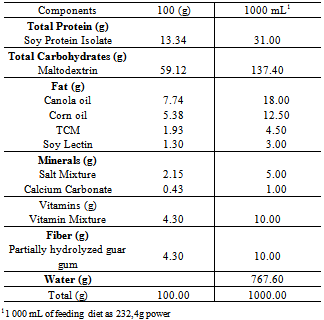| [1] | Harvey, L. Mineral bioavability. The Journal of Nutrition, v. 31, n. 4, p. 179-182, 2001. |
| [2] | Reddy, M B. Hurrel, R F. Cook, J D. Meat Consumption in a varied Diet Marginally Influences Nonheme Iron Absorption in Normal Individuals. The Journal of Nutrition, v. 136, n. 1, p. 576-581, 2006. |
| [3] | Zimmermann, M B. Biebinger, R. Rohner, F. Vitamin A supplementation in children with poor vitamin A and iron status increases erythropoietin and hemoglobin concentrations without changing total body iron. American Journal of Clinical Nutrition, v. 84, n. 1, p. 580-586, 2006. |
| [4] | Winichagoon, P. Mckenzie, J E. Chavasit, V. Pongcharoen, T. Gowachirapant, S. Boonpraderm, A. A Multimicronutrient-Fortified Seasoning Powder Enhances the Hemoglobin, Zinc, and Iodine Status of primary School Children in North East Thailand: A Randomized Controlled Trial of Efficacy. The Journal of Nutrition, v. 136, n. 3, p. 1617-1623, 2006. |
| [5] | Proulx, A K. Reddy, M B. Iron Bioavailability of Hemoglobin from Soy Root Nodules Using a Caco-2 Cell Culture Model. Journal of Agriculture and Food Chemistry, v. 54, n. 1, p. 518-522, 2006. |
| [6] | Pallarés, I F. Aliaga, I L. Barrionuevo, M. Alférez, M J. Campos, M S. Effect of iron deficiencyon the digestive utilization of iron, phosphorus, calcium and magnesium in rats. British Journal of Nutrition, v. 70, n. 1, p. 609-620, 1993. |
| [7] | Perales, S. Fortification of Milk with Calcium: Effect on Calcium Bioavailability and Interactions with Iron and Zinc. Journal of Agriculture and Food Chemistry, v. 54, p. 4901-4906, 2006. |
| [8] | Luten, J. Crews, H. Flynn, A. Van Dael, P. Kastenmayer, P. Hurrel, R. Deelstra, H. Interlaboratory trial on the determination of the in vitro iron dialysability from food. Journal of the Science of Food Agriculture, v. 72, n. 4, p. 415-424, 1996. |
| [9] | Miller, D D. Schricker, B R. Rasmussen, R R. Van Campen, D. An In vitro method for estimation of iron availability from meals. American Journal of Clinical Nutrition, v. 34, p. 2248-2256, 1981. |
| [10] | Narasinga Rao, B S. Methods for the Determination of Biovailability of Trace Metals: A Critical Evaluation, International Journal of Food Science &Technology, v. 31, n. 5, p. 353-361, 1994. |
| [11] | Association of Official Analytical Chemistrys. Official Methods of Analysis. Washington, DC: AOAC, 1995. |
| [12] | Reeves, P G. Nielsen, F H. Fahey, JR G C. AIN-93 Purified diets for laboratory rodents: final report of the American Institute of Nutrition ad hoc writing committee on the reformulation of the AIN- rodent diet. The Journal of Nutrition, v. 123, p. 1939-1951, 1993. |
| [13] | Neto, B B. Scarminio, I S. Bruns, R E. Como Fazer Experimentos – Pesquisa e desenvolvimento na ciência e na indústria. 2 ed, Campinas, Editora da UNICAMP, 2001. |
| [14] | Castro, I A. Tirapegui, J. Silva, R S S F. Protein Mixtures and Their Nutritional Properties Optimized by Response Surface Methodology. Nutrition Research, v. 20, n. 9, p. 1341-1353, 2000. |
| [15] | Cornell, J A. Experiments with mixtures, designs, models and the analysis of mixture data. 2.ed. Nova YorK: John Wiley & Sons, 1990. |
| [16] | Derringer, G. Suich, R. Simultaneous optimization of several response variables. Journal of Quality Technology, v. 12, p. 214-219, 1980. |
| [17] | Statistica, Data Analysis Software System; Tulsa, USA, 1998. |
| [18] | Pushpanjali K. Khokhar, S. In vitro availability of iron and zinc from some Indian vegetarian diets: correlations with dietary fibre and phytate. Food Chemistry, v. 56, n. 2, p. 111-114, 1996. |
| [19] | Chiplonkar, S A. Agte, V V. Tarwadi, K V. Kavadia, R.. In Vitro Dialyzability Using Meal Approach as na Index for Zinc and Iron Absorption in Humans. Biological Trace Element Research, v. 67, p. 249-255, 1999. |
| [20] | Kahyaoglu, T. Kaya, S. Determination of optimum processing conditions for hot-air roasting of hulled sesame seeds using response surface methodology. Journal of the Science of Food Agriculture, v. 86, n.4, p. 1452-1459, 2006. |
| [21] | Slavin, J L. Greenberg, N A. Partially hydrolyzed guar gum: clinical nutrition uses. Nutrition Research, v. 19, n. 6, p. 549-552, 2003. |
| [22] | Velázquez, M. Davies, C. Marett, R. Slavin, J L. Feirtag, J M. Effect of oligosaccharides and fiber substitutes on short-chain fatty acid production by human faecal microflora. Anaerobe, v. 1, n. 6, p. 87-93, 2001. |
| [23] | Spapen, H. Van Malderen, D C. Suys, O E. Huyghens, L. Soluble fiber reduces the incidence of diarrhea in septic patients receiving total enteral nutrition: a prospective, double-blind, randomized, and controlled trial. Clinical Nutrition, v. 20, n.4, p. 301-305, 2001. |
| [24] | Torre, M. Rodriguez, A R. Saura-Calixto, F. Interactions of Fe(II), Ca(II) and Fe(III) with high dietary fibre materials: a physicichemical approach. Food Chemistry, v. 54, p. 23-31, 1995. |
| [25] | Torre, M. Rodriguez, A R. Saura-Calixto, F. Effects of dietary and phytic acid on mineral availability. Critical Reviews in Food Science and Nutrition, v. 30, n. 1, p. 1-22, 1991. |
| [26] | Gupta, S. Lakshmi, A. Prakash, J. In vitro bioavailability of calcium and iron from selected green leafy vegetables. Journal of the Science of Food Agriculture, v. 86, p. 2147-2152, 2006. |
| [27] | Gámez C. Artacho, R. Ruíz-Lopez, M D. Navarro, M. Puerta, A. López, M C. Serum concentration and dietary intake of Mg and Ca in institutionalized elderly people. Science & Environmental Health Network, v. 203, p. 245-251, 1997. |
| [28] | Hunt, C D. Johnson, L. Magnesium requirements: new estimations for men and women by cross-sectional statistical analyses of metabolic magnesium balance data1-4. American Journal of Clinical Nutrition, v. 84, p. 843-852, 2006. |
| [29] | Oliveira, M A A. Osório, M M. Consumo de leite de vaca e anemia ferropriva na infância. Journal of Pediatric Gastroenterology and Nutrition, v. 81, n.4, p. 361-366, 2005. |
| [30] | Tso, P. Lee, T. Demichele, S J. Lymphatic absorption of structured triglycerides vs. physical mix in a rat model of fat malabsorption. The American Physiologycal Society, v.277, n. 2, p. 333-340, 1999. |
| [31] | Rodrigues, J N. Gioielli, LA. Anton, C. Propriedades físicas de lipídios estruturados obtidos de misturas de gordura do leite e óleo de milho. Ciência e Tecnologia de Alimentos, v. 23, n. 2, p. 226-231, 2003. |
| [32] | Toba, Y. Tanaka, Y. Tanaka, M. Comparison of the effects of milk components and calcium source on calcium bioavailability in growing male rats. Nutrition Research, v. 19, n. 3, p. 449-459, 1999. |
| [33] | Yang, G. Wu, X. Zhou, Y. Wang. Y. Application of dietary fiber in clinical enteral nutrition: A meta-analysis of randomized controlled trials. World Journal of Gastroenterology, v. 11, p. 3935-3938, 2005. |
| [34] | Velasco-Reynold, C. Navarro-Alarcon, M. Serrana, H L. Perez-Valero, V. Agil, A. Lopez-Martinez, M.C. Dialysability of Magnesium and Calcium from Hospital Duplicate Meals: Influence Exerted by Other Elements. Biological Trace Element Reserach, v. 133, p. 313–324, 2010. |

 xi = 1,0=100% and variables selected in this study were TCM (x1), Fiber (x2) and Calcium (x3). Analysis of variance and analysis of regression have been was used to evaluate the quality of the adjustment of the mathematical model and the test Qui-square was applied corrected by the experimental proportion for validation[13-16]. The data were analyzed by the program Statistica 6.0[17], being the differences considered significant when values of p < 0.05.
xi = 1,0=100% and variables selected in this study were TCM (x1), Fiber (x2) and Calcium (x3). Analysis of variance and analysis of regression have been was used to evaluate the quality of the adjustment of the mathematical model and the test Qui-square was applied corrected by the experimental proportion for validation[13-16]. The data were analyzed by the program Statistica 6.0[17], being the differences considered significant when values of p < 0.05.
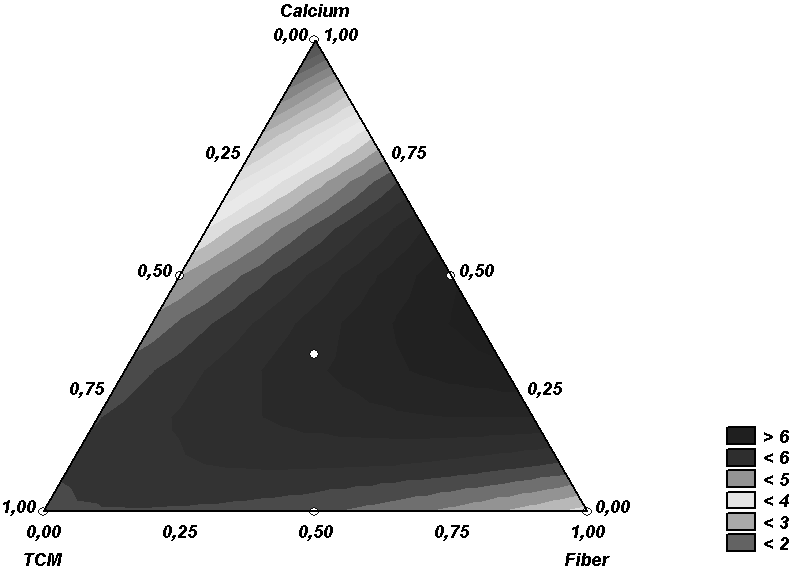

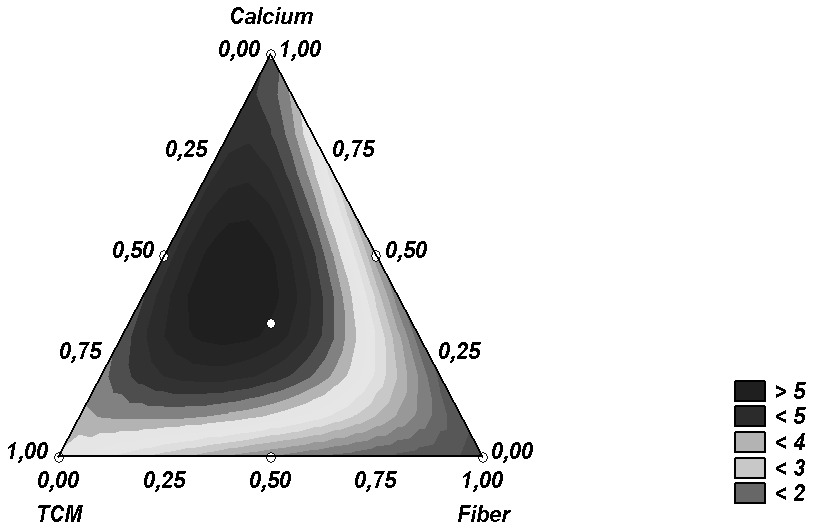
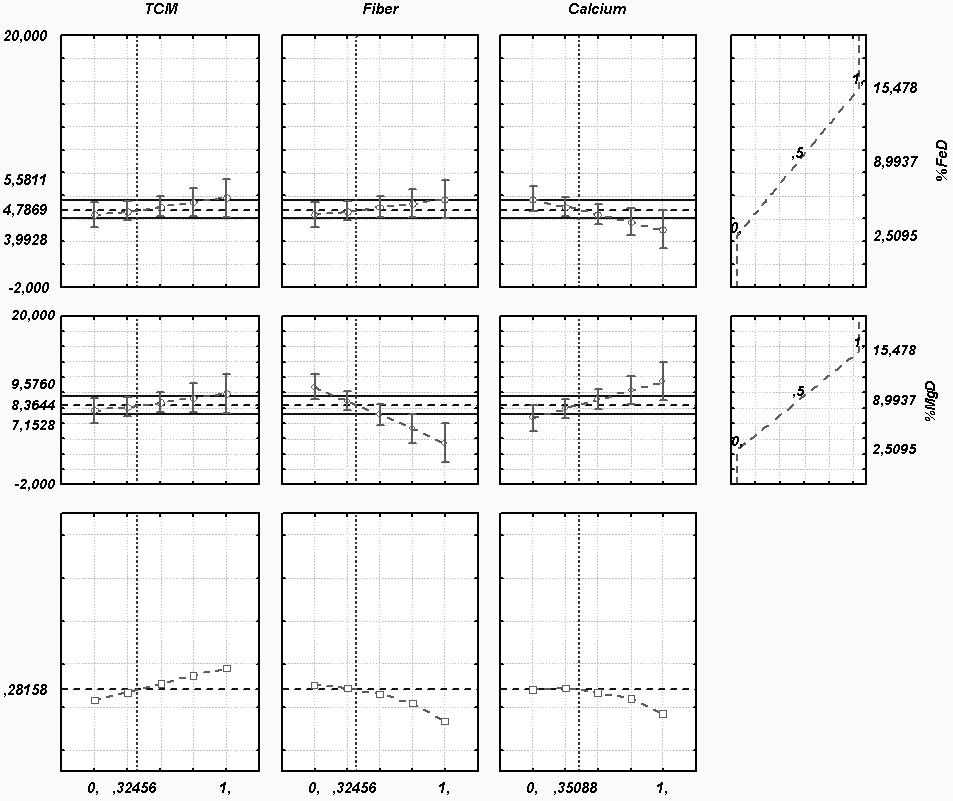
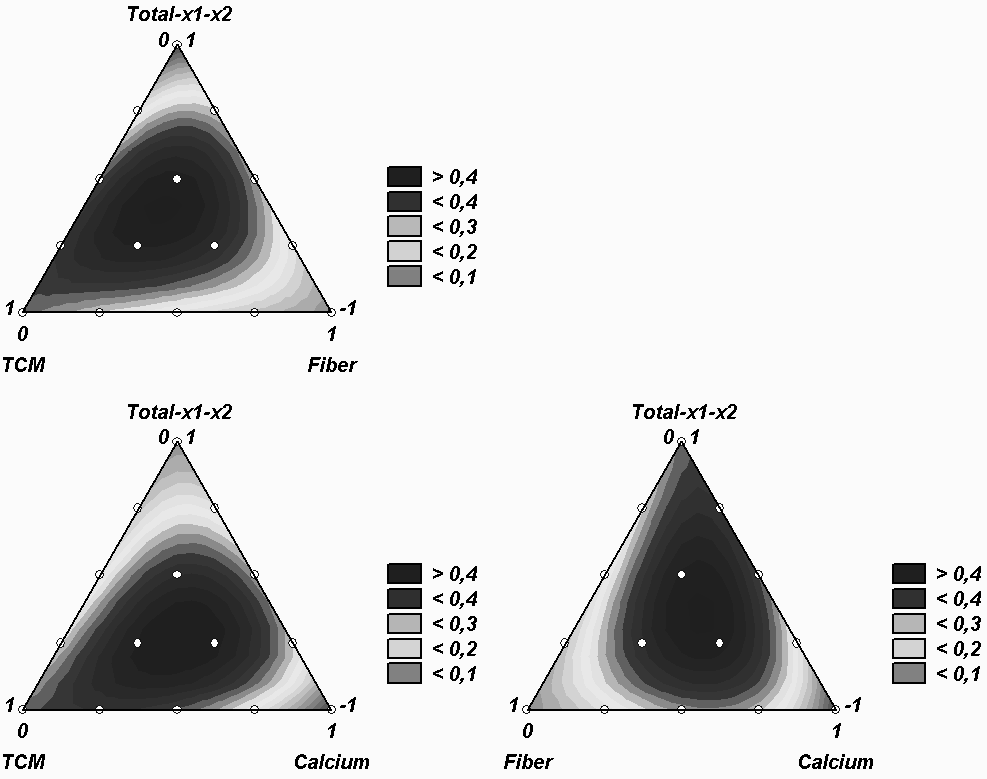
 Abstract
Abstract Reference
Reference Full-Text PDF
Full-Text PDF Full-text HTML
Full-text HTML